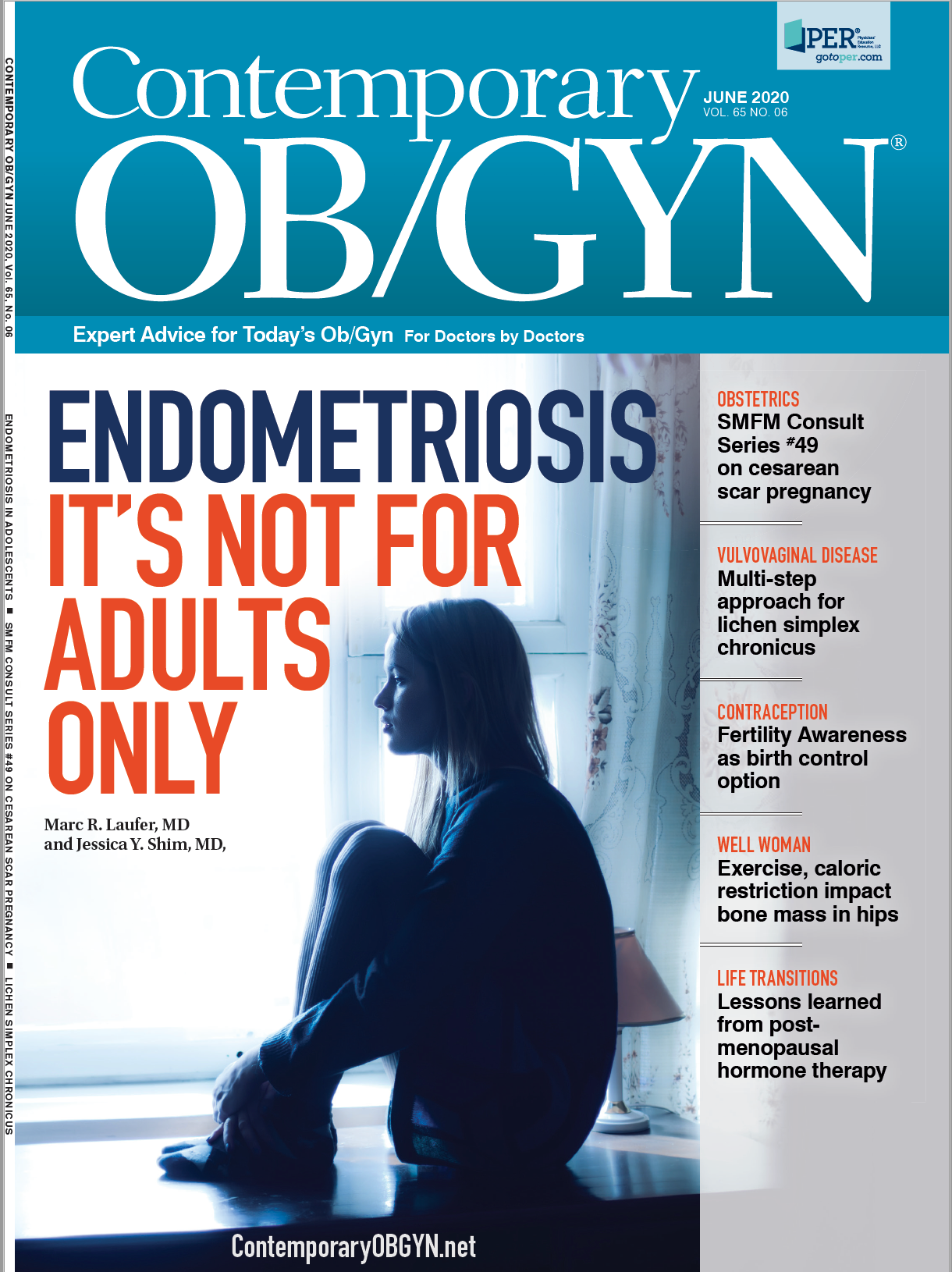Paucity of evidence limits known impact of CSPs
As we are now incorporating the new post-COVID-19 “normal” into our routines, our editor-in-chief, Dr. Catherine Spong, reflects on parallels with changes that went into play with the identification and management of patients with HIV.
As was done then, we are moving from an elite team approach to incorporation of patients with COVID-19 into our service, with everyone using the appropriate precautions to prevent transmission.
We recognize that personal protective equipment is now part of our daily lives. As such, learning must continue.
This issue of Contemporary OB/GYN includes an expert article on cesarean scar pregnancy (CSP) by the Society for Maternal-Fetal Medicine (SMFM).
Our valued partnership with SMFM gives us the ability to bring readers of our magazine the most up-to-date and topical information on conditions they face in practice. CSP is one of those topics.
The rise in cesarean deliveries coupled with the widespread use of ultrasound, especially in the first trimester, provided the opportunity to identify and diagnose this condition. Cesarean delivery as the mode of delivery rose from 1996 to 2009, peaking at 32.9%.
The most recent data from the Centers for Disease Control and prevention show that the rate in 2018 declined to 31.9%.1 Concurrent with the rise in cesarean deliveries was the rise inuse of ultrasound.
By 2001, 67% of women with live births received an ultrasound during pregnancy, an increase from 47.7% in 1989.2 In addition, at the same time, first-trimester ultrasound was actively being evaluated for detection of aneuploidy.3 The number of articles on CSP inversely mirrors the US national cesarean rate (Figure).
The authors of the SMFM article reviewed the literature and provide recommendations based on evidence and expert opinion, the latter in the setting where evidence is not available. A PubMed search documents the recent onset of CSP.
The first article was published in 1998 and there are only 398 articles in total (Figure). As expected, articles with concerning outcomes predominate, which is the case with any condition; normal outcomes rarely are published.
Importantly, expert opinion is essential in guidance about new areas, to provide a reasoned approach for the practitioner when data are not available.
As the article describes, CSP is an accepted precursor to placenta accreta spectrum (PAS), and affected pregnancies are at increased risk for hemorrhage as a result. Risk of uterine rupture, however, is less clear. As we take this information, we must be cautious and appreciate the similarities to other situations in obstetrics. Consider for example the “genetic sonogram” initially performed only in those women at high risk for fetal anomalies.
As ultrasound technology improved, more could be visualized, and soft markers were identified in these high-risk women, associating the soft markers with aneuploidy.
As the use of ultrasound expanded to low-risk women, it was found that many of these soft markers are normal variants, and that they alone do not increase the risk of aneuploidy.
As the SMFM experts note, “The true incidence of CSP is unknown, as the condition is likely underdiagnosed and underreported.” There are limited studies available following the course of CSPs to determine the outcome with expectant management.
A key question is whether only a subset of these patients might require immediate treatment to avoid uterine rupture. In the remainder of cases, if indeed they are at risk for PAS alone, it might be beneficial to have a discussion that incorporates shared decision-making, given the lack of evidence, and particularly because the pregnancy is likely to be the woman’s last.
One recently published study attempts to address this question. However, the women were identified at 10 to 13 weeks’ gestation, which is later than the expert opinion recommends, and it is not clear that all met the criteria for CSP.
Interestingly, this study found that only eight of the 40 women required a hysterectomy and 82% delivered vaginally.4 We should be attentive to these findings as we become more comfortable identifying and diagnosing CSP.
Current research on CSPs is extremely limited. Searching the National Institutes of Health Reporter database revealed no currently funded studies. A search of clinicaltrials.gov identified six trials, of which two are recruiting and none are in the United States.
We appreciate the partnership with SMFM, and the help from their experts with our practice.
References
1. US National Center for Health Statistics. Births – Method of delivery. https://www.cdc.gov/nchs/fastats/delivery.htm
2. Martin JA, Hamilton BE, Ventura SJ, Menacker F, Park MM, Sutton PD. Births: Final data for 2001. National vital statistics reports; vol 51 no. 2. Hyattsville, Maryland: National Center for Health Statistics. 2002.
3.Neiger R. First trimester ultrasound in prenatal diagnosis—part of the turning pyramid of prenatal care. J Clin Med. 2014 Sep;3(3):986-996. doi: 10.3390/jcm3030986
4. Happe SK, Rac MWF, Moschos E, et al. Pprospective first-trimester ultrasound imaging of low implantation and placenta accreta spectrum. J Ultrasound Med.2020 May 6. doi: 10.1002/jum.15295. Online ahead of print.

Contemporary OB/GYN Senior Editor Angie DeRosa gets insight on the current state of COVID-19 from Christina Han, MD, division director of maternal-fetal medicine at the University of California, Los Angeles, and member of its COVID-19 task force. Han is an active member of the Society for Maternal-Fetal Medicine and discusses the issues on behalf of SMFM.
Listen
Study links COVID-19 infection to higher low birthweight and preterm birth rates
March 24th 2025A new study found that pregnant women infected with COVID-19, especially in the third trimester or with severe symptoms, faced higher risks of preterm birth, low birthweight, and neonatal intensive care unit admission.
Read More
